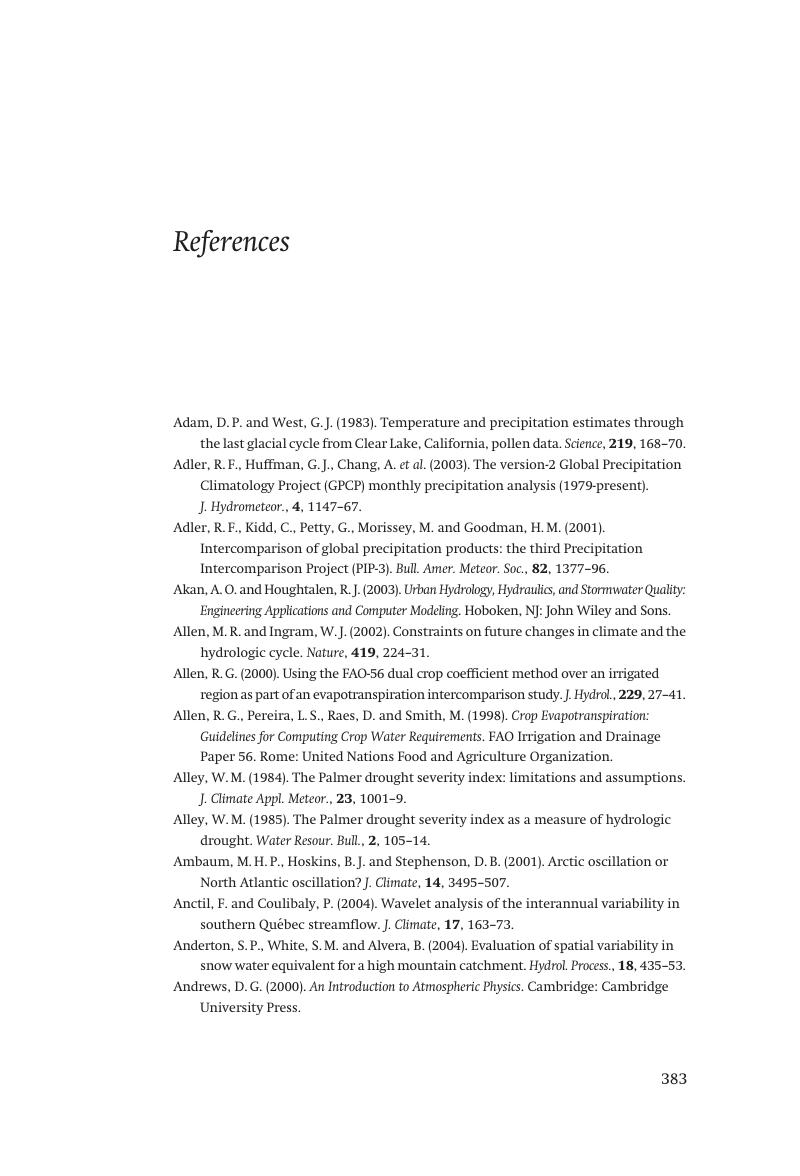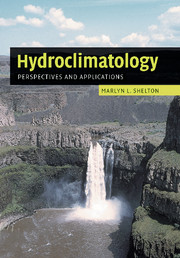Book contents
- Frontmatter
- Contents
- Preface
- 1 The realm of hydroclimatology
- 2 The climate system and the hydrologic cycle
- 3 Measuring hydroclimate atmospheric components
- 4 Measuring hydroclimate terrestrial components
- 5 Remote sensing and hydroclimate data
- 6 The runoff process and streamflow
- 7 Hydroclimate spatial variations
- 8 Hydroclimate temporal variations
- 9 Floods: the hydroclimatic extreme of excessive moisture
- 10 Drought: the hydroclimatic extreme of deficient moisture
- References
- Index
- References
References
Published online by Cambridge University Press: 06 July 2010
- Frontmatter
- Contents
- Preface
- 1 The realm of hydroclimatology
- 2 The climate system and the hydrologic cycle
- 3 Measuring hydroclimate atmospheric components
- 4 Measuring hydroclimate terrestrial components
- 5 Remote sensing and hydroclimate data
- 6 The runoff process and streamflow
- 7 Hydroclimate spatial variations
- 8 Hydroclimate temporal variations
- 9 Floods: the hydroclimatic extreme of excessive moisture
- 10 Drought: the hydroclimatic extreme of deficient moisture
- References
- Index
- References
Summary

- Type
- Chapter
- Information
- HydroclimatologyPerspectives and Applications, pp. 383 - 417Publisher: Cambridge University PressPrint publication year: 2008



